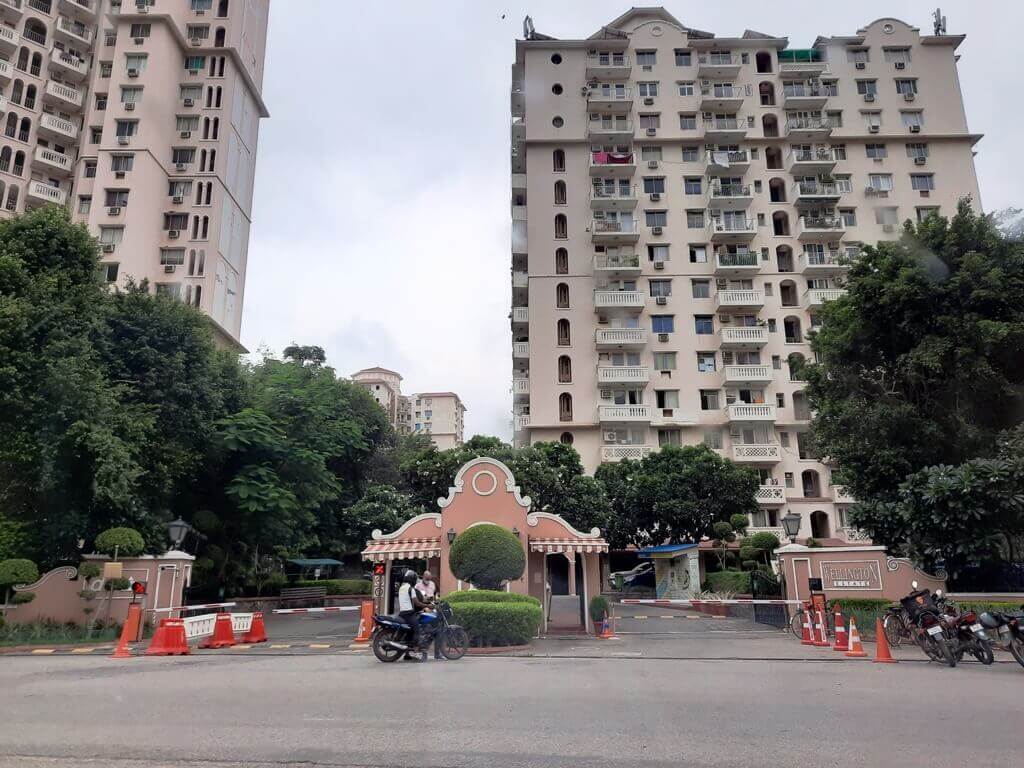
Ganesh Chaturthi, also known as Vinayaka Chaturthi, is one of the most popular and widely celebrated festivals in India. Dedicated to Lord Ganesha, the elephant-headed god who is revered as the remover of obstacles, the deity of wisdom, prosperity, and good fortune, this festival is observed with great enthusiasm, devotion, and cultural significance across the country, particularly in the states of Maharashtra, Karnataka, Andhra Pradesh, and Goa. The celebration of Ganesh Chaturthi spans over ten days, culminating in a grand procession and the immersion of the Ganesha idol in water, signifying the return of the deity to his celestial abode.
This article delves into the history, significance, rituals, and importance of Ganesh Chaturthi in Hinduism, highlighting how it has evolved from a religious celebration into a cultural and community event that brings people together across regions and faiths.
History of Ganesh Chaturthi
The origins of Ganesh Chaturthi can be traced back to ancient times, with references to the festival appearing in religious texts, scriptures, and historical accounts. The festival has undergone significant transformations over the centuries, evolving from a private, family-based worship to a large-scale public celebration.
1. Mythological Origins
Ganesh Chaturthi is believed to celebrate the birth of Lord Ganesha, the son of Lord Shiva and Goddess Parvati. According to Hindu mythology, Ganesha was created by Parvati using sandalwood paste and breathed life into him while Shiva was away meditating. Ganesha was tasked with guarding Parvati's chambers. When Shiva returned and attempted to enter, Ganesha, not recognizing him, blocked his path. Enraged, Shiva severed Ganesha's head. Upon Parvati’s insistence, Shiva promised to bring Ganesha back to life and replaced his head with that of an elephant, giving him his iconic form. Since then, Lord Ganesha has been revered as the remover of obstacles and the lord of beginnings.
2. Ancient and Medieval Celebrations
The worship of Ganesha is mentioned in ancient Hindu texts like the Rigveda, and references to Ganesha Chaturthi can be found in the Puranas, including the Skanda Purana and the Narada Purana. In the medieval period, the festival was celebrated on a small scale in households, with families performing rituals and offering prayers to small clay idols of Ganesha.
In medieval India, Ganesha was widely revered by both the ruling dynasties and common people. The Chalukyas, Rashtrakutas, and Vijayanagara empires, among others, promoted the worship of Ganesha. Temples dedicated to Ganesha were constructed, and the deity gained immense popularity in southern and western India.
3. Revival by Lokmanya Tilak
The modern form of Ganesh Chaturthi, as a large-scale public festival, was pioneered by Indian freedom fighter Lokmanya Bal Gangadhar Tilak in 1893. Tilak transformed Ganesh Chaturthi from a private religious affair into a public event to unite people across caste lines and promote nationalist sentiments against British colonial rule.
Tilak recognized the potential of Ganesh Chaturthi as a platform for social and political gathering. He encouraged mass participation, large processions, and public events around the festival, which helped to foster a sense of unity and patriotism among Indians during the struggle for independence. This public celebration became a symbol of resistance against British policies that discouraged large gatherings and meetings.
Highlights of Ganesh Chaturthi Celebrations
Ganesh Chaturthi is marked by various rituals, cultural events, and community activities, with each region adding its unique flavor to the festival. The celebration includes the installation of Ganesha idols, prayers, offerings, feasts, and processions, culminating in the immersion (visarjan) of the idol in water.
1. Preparation and Idol Installation (Pranapratishtha)
The preparations for Ganesh Chaturthi begin weeks in advance. Artisans create beautiful and intricate idols of Lord Ganesha from clay, plaster of Paris, or other materials. These idols vary in size, ranging from small household versions to massive public ones towering over 30 feet.
The festival officially begins with the installation of the Ganesha idol in homes, temples, and public pandals (temporary structures). This installation is called "Pranapratishtha," where devotees invoke the presence of Lord Ganesha in the idol through specific rituals. Devotees decorate the area with flowers, lights, and rangoli (colored patterns on the floor), creating a festive atmosphere.
2. Rituals and Offerings
During the ten days of Ganesh Chaturthi, various rituals and prayers (pujas) are performed in honor of Lord Ganesha. These include the chanting of Vedic hymns, mantras, and the offering of flowers, sweets, and fruits. Modak, a sweet dumpling filled with coconut and jaggery, is considered Ganesha's favorite food and is an essential offering during the festival.
Morning and evening prayers are conducted daily, and the idol is adorned with fresh flowers and ornaments. Devotees recite the Ganesha Aarti (a devotional song) and offer various items like durva grass, sandalwood paste, and incense to the deity. The Ganesha Sahasranama, a hymn that praises the 1000 names of Lord Ganesha, is often recited during the festival.
3. Cultural Programs and Community Events
In addition to religious rituals, Ganesh Chaturthi has become a platform for cultural and social gatherings. Public pandals often host various cultural programs, including music and dance performances, plays, and debates. These events bring communities together and provide entertainment during the ten-day celebration.
Many pandals also engage in charitable activities, such as distributing food to the needy, organizing blood donation camps, and raising awareness about social issues. In recent years, there has been a growing focus on eco-friendly practices, with pandals promoting the use of clay idols and reducing pollution during idol immersion.
4. Visarjan (Idol Immersion)
The final and most significant ritual of Ganesh Chaturthi is the visarjan, or the immersion of the Ganesha idol in a body of water. This symbolizes the departure of Lord Ganesha to his heavenly abode, taking away the misfortunes of his devotees. The immersion usually takes place on the 10th day of the festival, known as Anant Chaturdashi, but some devotees opt for immersion on the 1st, 3rd, or 5th day.
The procession leading up to the immersion is a grand affair, with devotees dancing, singing, and chanting “Ganpati Bappa Morya, Pudhchya Varshi Lavkar Ya” (O Lord Ganesha, come again next year). The immersion is accompanied by a sense of both celebration and farewell, as devotees pray for Ganesha’s blessings and vow to celebrate his return the following year.
Importance of Ganesh Chaturthi in Hindu Religion
Ganesh Chaturthi holds immense spiritual and cultural importance in Hinduism. It is not only a time for worship and devotion but also a celebration of unity, prosperity, and renewal. The festival embodies the core values of Hindu philosophy, such as devotion (bhakti), detachment, and the belief in the cyclical nature of life and death.
1. Ganesha as the Remover of Obstacles
One of the primary reasons for Ganesha’s popularity in Hinduism is his role as the remover of obstacles (Vighnaharta). Devotees seek his blessings before embarking on any new venture, be it a business, marriage, or journey. The worship of Ganesha during Ganesh Chaturthi is believed to bring good fortune, success, and the removal of any hindrances in the path of life.
Ganesha is also known as the deity of wisdom and intellect, making him the patron of scholars, writers, and artists. His elephant head symbolizes the power of the mind, while his large ears represent the ability to listen and absorb knowledge. During Ganesh Chaturthi, devotees pray for wisdom and clarity in their personal and professional lives.
2. Celebration of New Beginnings
Ganesh Chaturthi is often seen as an auspicious time to start new endeavors. The festival marks the beginning of a new chapter, and devotees believe that by worshipping Lord Ganesha, they can ensure a smooth and prosperous future. Whether it’s a new business venture, the construction of a home, or the start of a personal journey, Ganesha’s blessings are sought for success and fulfillment.
The festival also aligns with the agricultural cycle in many parts of India. In Maharashtra, for example, Ganesh Chaturthi coincides with the end of the monsoon season and the start of the harvest period. Farmers and rural communities celebrate the festival as a thanksgiving to Ganesha for a bountiful harvest and a prosperous year ahead.
3. Symbolism of Unity and Inclusivity
Ganesh Chaturthi is celebrated by people of all social and economic backgrounds, making it a unifying force in Indian society. The public nature of the festival, especially since its revival by Lokmanya Tilak, has helped foster a sense of community and solidarity among people. The celebration of Ganesh Chaturthi transcends caste, class, and regional differences, with devotees coming together to worship and celebrate.
In many regions, Ganesh Chaturthi is a time for family reunions and social gatherings. Friends and neighbors visit each other’s homes, share meals, and offer prayers together. The festival also encourages inclusivity, as people from different faiths and cultural backgrounds participate in the celebrations, reflecting the pluralistic nature of Indian society.
4. Environmental Awareness and Eco-Friendly Practices
In recent years, there has been a growing awareness of the environmental impact of Ganesh Chaturthi, particularly concerning the materials used in idol-making and the pollution caused by idol immersion. Traditionally, Ganesha idols were made from natural clay, which dissolved harmlessly in water during visarjan. However, the use of plaster of Paris and chemical paints in modern idol-making has led to water pollution and environmental degradation.
To address this issue, many communities and environmental organizations have started promoting the use of eco-friendly Ganesha idols made from biodegradable materials like clay, paper-mache, and natural dyes. Some initiatives also encourage symbolic immersions, where a small, eco-friendly idol is immersed in a home water tank rather than a public water body.
The shift towards eco-friendly practices during Ganesh Chaturthi reflects the broader values of Hinduism, which emphasize respect for nature and the environment. By adopting sustainable practices, devotees honor not only Lord Ganesha but also the natural world that sustains life.
Conclusion
Ganesh Chaturthi is a festival that encapsulates the rich cultural, spiritual, and social fabric of India. It is a time for devotion, celebration, and reflection on the values that Lord Ganesha represents—wisdom, prosperity, and the removal of obstacles. Over the centuries, Ganesh Chaturthi has evolved from a private religious ritual to a public festival that unites people across regions, castes, and communities.
The history of Ganesh Chaturthi, from its ancient roots to its modern revival by Lokmanya Tilak, showcases its enduring significance in Indian culture. The festival’s rituals, from the installation of idols to the final immersion, reflect the cyclical nature of life, the importance of new beginnings, and the need for unity and inclusivity in society.
As the world continues to grapple with environmental challenges, the adoption of eco-friendly practices during Ganesh Chaturthi serves as a reminder of the importance of sustainability and the need to protect the natural world for future generations.
Ganesh Chaturthi remains one of the most beloved and celebrated festivals in India, offering devotees an opportunity to seek Lord Ganesha’s blessings, renew their faith, and come together in a spirit of joy and devotion. With each passing year, the festival continues to grow in significance, not only as a religious observance but also as a symbol of hope, unity, and prosperity.
Reference: Reias India Real Estate Private Limited

































































































































































































































































































